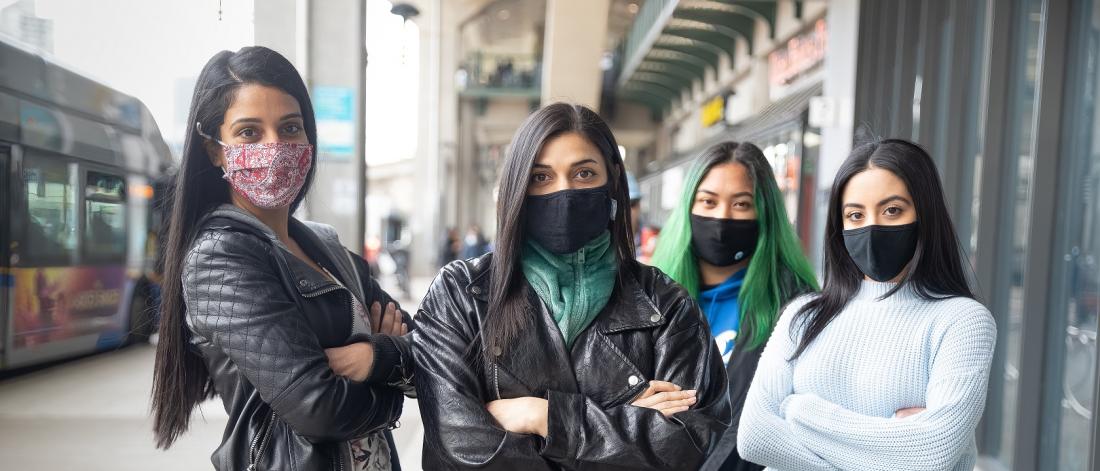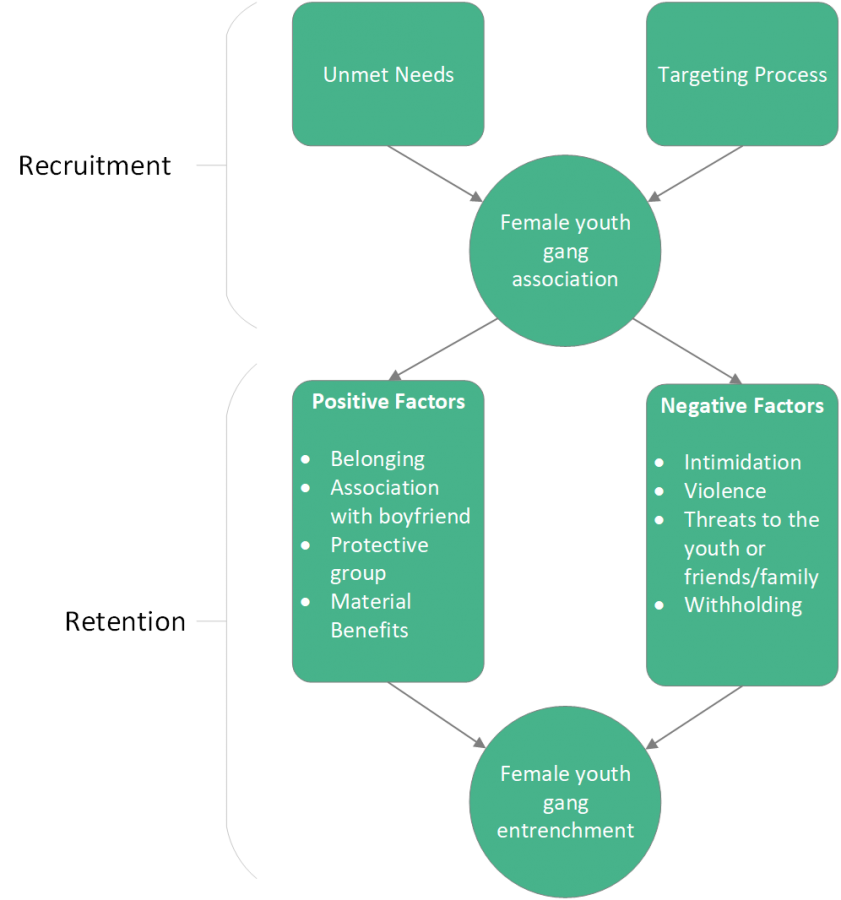
Females in Gangs
Females are not immune to gang-related violence and homicide.
Females are becoming more involved in gang activities such as dial-a-doping drug lines, debt collection, and conducting violent robberies of vulnerable people. Others are affiliated with gang life through romantic relationships with gang-involved males and may be asked to hold drugs and weapons, or sign off on rental contracts for vehicles and residences as they are less likely to be flagged by authorities.
Gangs also target female youth for sexual and criminal exploitation and human trafficking. Female gang members may reduce the extent of their own exploitation by recruiting other females to take their place in performing sexual acts.
The need for belonging is a primary reason females are recruited and remain gang-involved. A romantic relationship may make her feel loved despite the negative treatment. Intimidation, such as threatening her physical safety or her reputation by telling family or peers about her sexual exploitation, can also prevent a female from exiting the lifestyle.
Risk Factors & Warning Signs
Most risk factors for males and females involved in gangs are similar. However, females are more likely to experience a history of victimization such as sexual exploitation. Below are some risk factors that leave youth vulnerable for gang recruitment (some can be applicable to both males and females) as well as possible signs of sexual exploitation.
The presence of one or more of these risk factors does not mean a young person is gang-involved or is being sexually exploited, but these risk factors should be explored. To get further support for females involved in gangs or at-risk for gang involvement and sexual exploitation, please connect with the Female Gang Intervention Program.
Risk factors:
-
Material wants
-
Lack of school connection
-
Peer or boyfriend related influences
-
Prior sex trade involvement
-
Need for protection
-
History of prior abuse by family members, partners or peers
-
Unresolved history of trauma
-
Impact of colonialism and systematic racism
Signs of sexual exploitation:
-
Recent change in friend group
-
Getting hair, eyelashes, and nails done regularly with no means to pay for these services
-
Wearing expensive items with no means to pay for them
-
Alcohol and substance use
-
Dating older partners
-
Unhealthy, controlling relationships
Recruitment and Retention

Prevention
Strengthening parent-child relationships is just one important way to reduce risk for gang recruitment or victimization. You can build stronger connections by:
-
Empower yourself. Learn more about youth issues so you can start the conversation.
-
Spend quality time. Share in their interests such as music and hobbies and take time to talk about their day.
-
Have open and honest communication. Start communicating openly with your child at a young age. Be open to different opinions and actively listen.
-
Be aware of your child’s online activity. Social media is a normal part of today’s culture but it can pose a risk to young people. Learn how to talk to them about their online safety.
-
Encourage participation in positive activities. Young women who engage in positive social activities at school or in the community are more likely to demonstrate positive behaviours.
Learn more about building stronger connections with your child.
